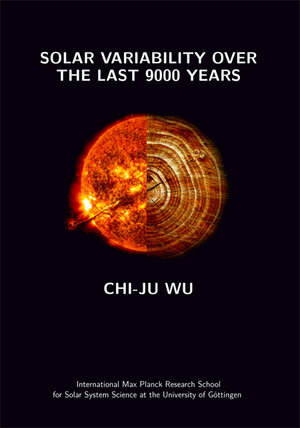
×
![Buchcover ISBN 9783944072630]()
Solar Variability over the Last 9000 Years
von Chi-Ju WuKnowledge of solar irradiance variability is crucial to understand the influence of the Sun on the Earth’s climate system. Direct spacebased measurements of solar irradiance are only available since 1978 which is not sufficient for studying long-term solar variability. Thus longer records and reconstructions of the solar variability in the past are required. The directly observed sunspot number covers the last four centuries, while going further back in time one has to rely on indirect proxies of solar activity, such as concentrations of cosmogenic isotopes 10Be and 14C in terrestrial archives. They are produced in the upper terrestrial atmosphere by impinging galactic cosmic rays whose flux is modulated by the heliospheric magnetic field. Therefore, the signals in the cosmogenic isotopes share high similarities while short-term discrepancies can be seen attributed to the local climate and the systematic effects. To account for these issues, we constructed a state-of-the-art consistent multi-isotope composite from one global 14C and six regional 10Be data sets using a new Bayesian approach. This composite is then used to reconstruct the solar irradiance over the last 9000 years with the semi-empirical SATIRE-M (Spectral And Total Irradiance REconstruction, M for millennia) model. Furthermore, due to the sampling of the cosmogenic isotope data, the temporal resolution of the reconstructions with the SATIRE-M model is restricted to decadal so the information on the solar cycles is unfortunately averaged out. Hence, we developed a statistical approach to simulate the quasi 11-year solar cycle from the observed decadally-averaged sunspot numbers. This final solar irradiance reconstruction has been provided as a solar forcing input to climate models. This hopefully will help us to better understand the degree of the solar influence on the Earth’s climate on long time scales.


